#set in 1920s
Text
Series Review #1 :
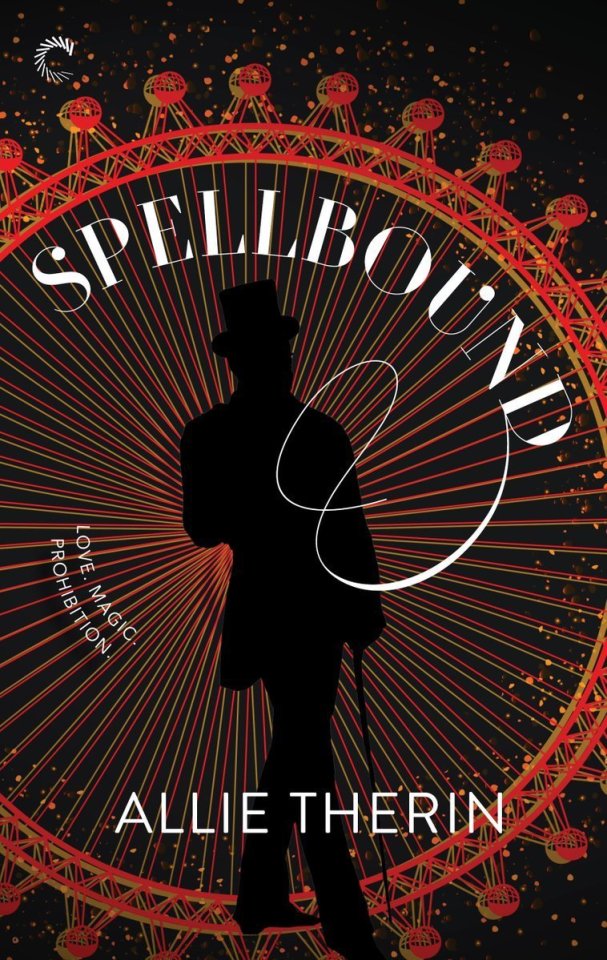


Magic In Manhattan Series by Ally Therin:
Spellbound
Starcrossed
Wonderstruck
Spellbound: ⭐⭐⭐⭐⭐ ( 5 out of 5 stars)
Starcrossed: ⭐⭐⭐⭐⭐ (5 out of 5 stars)
Wonderstruck: ⭐⭐⭐⭐⭐ (5 out of 5 stars)
Reading Time:
Spellbound: 03/08/2024 - 03/09/2024
Starcrossed: 03/11/2024 - 03/13/2024
Wonderstruck: 03/15/2024 - 03/16/2024
Notes:
So, this was a series that was recommended to me by a close friend..... and holy crap am I glad I took time to read these amazing books. First off, the plot? Fantastic. I've truly never read another book like it. The characters? Badass yet adorable. This might hold the current spot for my favorite male/male romance yet. It surprised me that I'd enjoy it this much to be honest, I'm not typically a massive reader of more historical-set books. But once I started, I could barely stop. It's been years since I read a series so fast, and I can't help but wish there were more than just the three. Thank goodness there's a spin-off series though ;)
Complete honesty, no words could describe how much I enjoyed it, a definite recommendation to anyone who seems even remotely interested.
#fantasy#book recommendations#book review#romance#male/male#male main character#multiple pov#set in 1920s#series review#series recommendations
3 notes
·
View notes
Text




The Adventures of Prince Achmed (1926) dir. Lotte Reiniger
#the adventures of prince achmed#1926#lotte reiniger#art#animated#retro#vintage#1920s#aesthetic#weirdcore#colors#artblr#gifs#gif set#vintage films#fairycore#cottagecore#fairy aesthetic#lovecore#fantasy#fantasy aesthetic#dark fantasy
2K notes
·
View notes
Text
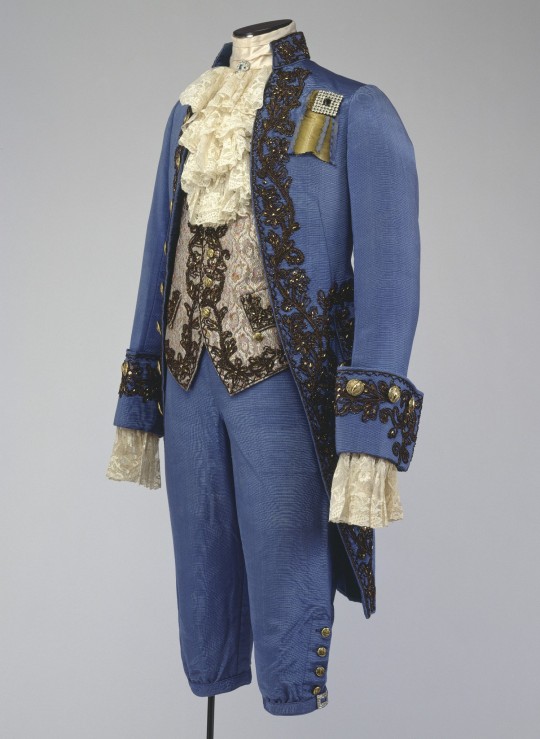
• Costumed Set.
Designer/Maker: I.Miller & Son, G. Shindhelm, Eaves Costume Co.
Date: 1924
#fashion history#history of fashion#fashion#historical fashion#costume#historical costuming#historical costume#vintage#vintage fashion#1920's#costumed set#eaves costume co.#1924
769 notes
·
View notes
Text
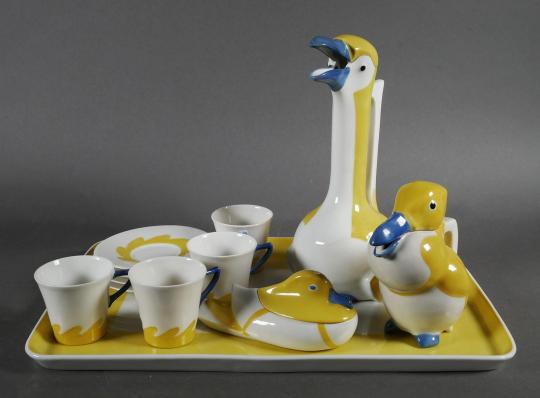
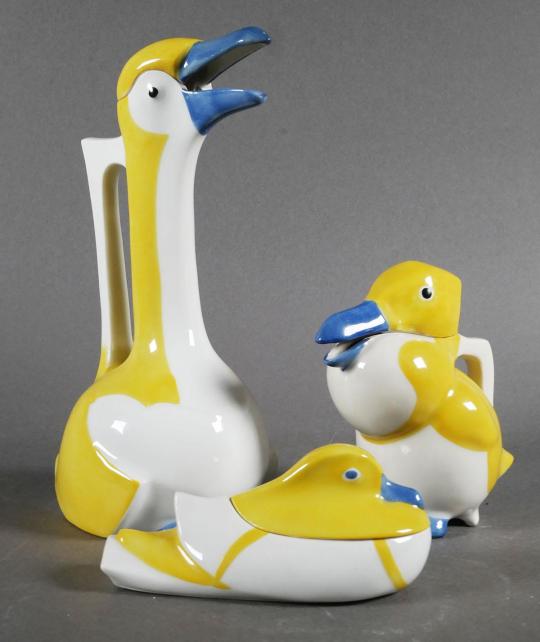
---
Designer/Brand: Edouard Marcel Sandoz / Limoges
Region: France
Time period: 1920s
#tea#teapot#tea set#teacup#sugar bowl#cream pitcher#cup and saucer#tea tray#edouard marcel sandoz#limoges#1920s#queueteas
307 notes
·
View notes
Text

Winter Lights Set
Winter has arrived! Your husband's family wants to spend Winterfest during their stay in Hengford? Do you have to go to a cocktail party in the middle of Windenburg? Better do it in a new warm coat with the most fashionable fur collars possible!
Winter Lights is a set of various styles of 20s-30s coats to enjoy and combine with different colors of fur.
[More photos, info and download below]
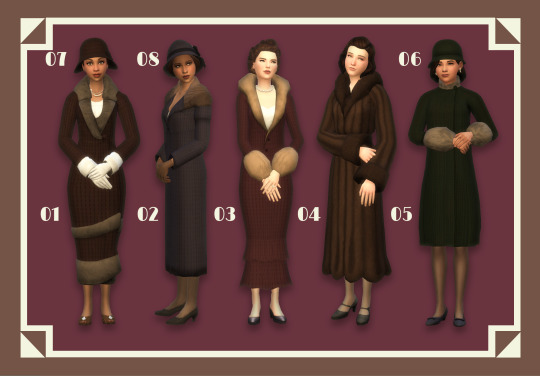


1. Hirma coat
27 swatches.
Fur acc overlay in rings category (16 swatches)
Mesh by @javitrulovesims
2. Mercedes coat
27 swatches.
Fur acc overlay in rings category (16 swatches)
Mesh by @javitrulovesims
3. Corina Coat
27 swatches.
Fur acc overlay in rings category (16 swatches)
Mesh by @javitrulovesims
4. Piuque fur coat
16 swatches.
Mesh by @zurkdesign
5. Leonor shor coat
27 swatches.
Fur acc overlay in rings category (16 swatches)
Mesh by @javitrulovesims
6. Arsenia Cloche
27 swatches.
Mesh by @happylifesims
7. Aureliana Cloche
16 swatches.
Mesh by @happylifesims
8. Asuncion Cloche
84 swatches.
Mesh by @zurkdesign

[SIMFILESHARE][PATREON]
#ts4#ts4 historian#ts4 cc#ts4 maxi match#sims 4 historical#ts4 recolor#my cc#ts4 historian cc#ts4 history challengue cc#ts4 1930s#ts4 1920s#Winter Lights set
1K notes
·
View notes
Text





part of anthony boyle's interview with WWD - Women's Wear Daily
#'i think i've got a face that just looks like it can't comprehend the internet' priceless!#also very funny bc MotA is actually the 2nd 1940s ww2 miniseries i've seen him in (everyone go watch the plot against america right Now)#he's been in the 1940s and the 1910s and the 1980s and the 1990s. soon to include the 1860s#i wanna see him in something set in the 1920s or the 1700s or hell. let's take it back to the middle ages lol i'm not picky!#masters of the air#hbo war#interview#anthony boyle
111 notes
·
View notes
Text









Record scratch!
American Whoopee [x]
#american whoopee#shipwrecked comedy#userthing#perioddramaedit#sarah grace hart#julia cho#christopher higgins#1920s#usercreate#my edits#o canada#i've been meaning to gif american whoopee for ages#but had no idea where to start#every frame is golden as always#and then i thought i'll start with chris playing a canadian XD#also sad i had to cut the title cards :(#i tried a set with smaller gifs but i thought the larger ones are a bit better
62 notes
·
View notes
Text

Brooke Perry & Scarlett Leithold for Sherri Hill
#Brooke Perry#Scarlett Leithold#feminine fashion#pink & blue#besties#smiling#girlfriends#2 piece set#Sherri Hill#51883#satin skirt#pinkified#high resolution#1280 x 1920#kirstydreaming
172 notes
·
View notes
Photo

L'orange Perfume Bottle Set. Parfums De Marcy, 1925
612 notes
·
View notes
Text


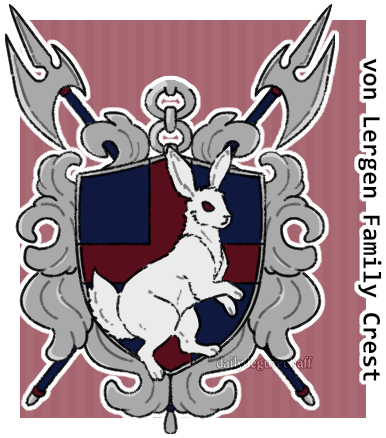
ive been thinking about one of my fics/aus lately, so naturally i started drawing and writing about them again.
presented with bare minimum context: two members of the von Lergen family + something extra
#bonus doodle#youjo senki#the saga of tanya the evil#tanya von degurechaff#papa erich au#erich von rerugen#erich von lergen#lergen#zettour gets himself fired successfully after losing the war and sets up erich to be promoted to his place#“because he wants the empire's army to still have a good leader even in its broken state?” you ask#ah no. because he wants erich to have the salary raise so he'll have more resources to take care of tanya#lets be honest i really have no idea how the rankings on the collar and shoulder work#i just based it on a screenshot of zettour's uniform from the anime#what else was i going to comment on#OH THE CREST#i did some bare minimum googling of symbolism but im not sure about its accuracy#i just wanted it to look cool ok#and i realize yeah they probably dont use those crests anymore in the 1920-30s but HUSH its for the sake of STORY#ok bye <3#alternate universe
105 notes
·
View notes
Text

putting the escape in escapism
#( sorry i haven't been posting i've been trying to get this gif set done but procrastinating pfft )#Jervis Tetch#the mad hatter#dc mad hatter#1920s jervis tetch#vintagecandy's jervis tetch#batman#gotham rogues#1920s gotham
343 notes
·
View notes
Photo

Ruth Negga as Clare & Tessa Thompson as Irene in Passing (Film, 2021).
#passing#perioddramaedit#ruth negga#clare#tessa thompson#irene#1920s#20th Century#Marci Rodgers#set pic
206 notes
·
View notes
Text
Cosplay the Classics: Natacha Rambova
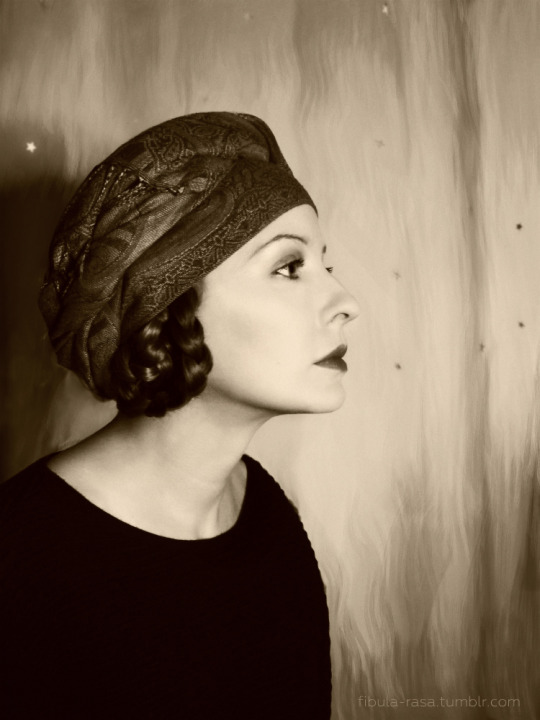
My closet cosplay of Natacha Rambova’s signature look from the 1920s
It’s unbearably common for people who have written about Natacha Rambova to emphasize that her “real” name was “Winifred Hudnut.” In reality, Rambova had about a half dozen names she went by (or could have gone by). Natacha Rambova was the name she took when she began her working life as a teenager with Theodore Kosloff’s ballet company—hence the Russophone name. And, as Rambova was a person who first and foremost lived to work, sticking with her professional name seems true to her character, Slav or not. You see, the primary reason Rambova was (and is) subjected to this passive-aggressiveness is part of a lingering effort to delegitimize her and her work. Sometimes that takes the form of calling her Winifred Hudnut and sometimes “Mrs. Valentino.” While there are valid reasons to criticize Rambova and her work, the aspersions typically lobbed at her fully miss their mark because they’re motivated by the desire to belittle a woman who knew the value of her work and her art and had the necessary privilege to fight for it.
"Natacha Rambova seems to belong most to me, the individual I think I am, but of course, I wasn’t born that way."
—“Wedded and Parted” by Ruth Waterbury, Photoplay, December 1922

Collage of portraits of Rambova from the 1920s
READ ON below the JUMP!
To begin at the beginning, Rambova was born as Winifred “Wink” Shaughnessy in Utah in 1897. Her father, who was significantly older than her mother, was found lacking as a parent and a spouse, and the Shaughnessy’s divorced when Rambova was young. Her youth was spent bouncing between her mother’s home in San Francisco, boarding school in England, and her aunt’s villa in France. Early on Rambova discovered two of the great passions of her life, ballet and mythology. The latter became an enduring fascination that guided Rambova’s varied pursuits throughout her life.
At first, her family encouraged Rambova’s interest in ballet. However, around 1914, when Rambova was 17, the shady nature of Rambova’s relationship with Kosloff was discovered by her mother, who tried to have Kosloff deported. At the time, Kosloff was supporting a wife and child back in England while keeping house with Rambova and another of his dancers, Vera Fredova (who was also legally named Winifred and also a teenager btw). Mom called off the lawsuit, and for years Kosloff, Rambova, and Fredova ran the ballet company together.
The company relocated to Los Angeles where Kosloff entered into a contract with Cecil B. DeMille. The company would provide art and costume designs for DeMille’s films and Kosloff himself would appear in the films. While Kosloff’s name is found in the credits for most of these films, it’s now widely accepted that Rambova was doing most, if not all, of the research and design work.

Theodore Kosloff in his costume from The Woman God Forgot (1917) on the left with Rambova (who does not appear in the film)
In this creatively productive period, Rambova shifted her focus away from dance toward historical research and costume and set design as her primary endeavor. For DeMille, Rambova contributed designs for The Woman God Forgot (1917), Why Change Your Wife? (1920), Something to Think About (1920), and also designed the Cinderella fantasy sequence of Forbidden Fruit (1921).
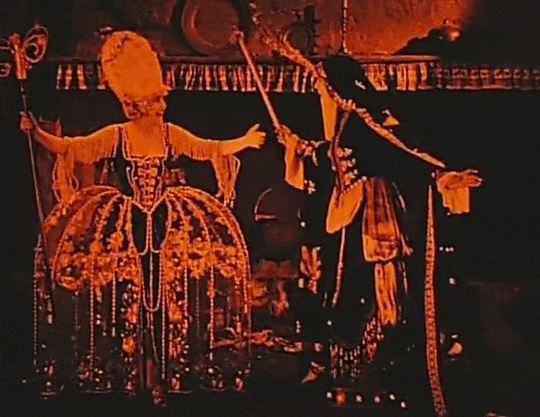
from the Cinderella sequence of Forbidden Fruit [more gifs here]
The work caught the eye of Nazimova, who was still working at Metro at the time. Once Nazimova realized that Rambova was the one doing the work, she engaged her directly to work on her now lost film Billions (1920). Rambova would receive on-screen credit for her art direction on Nazimova’s final film for Metro, the deco-bonanza Camille (1921).
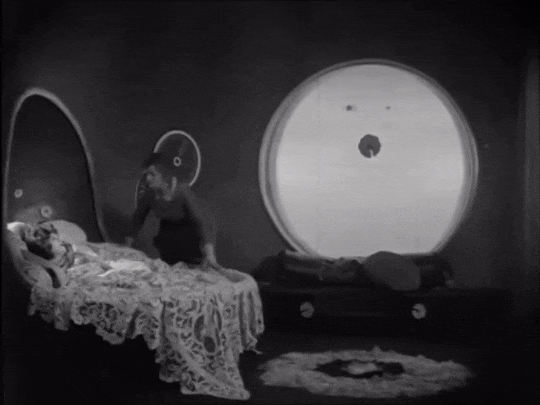
from Camille [more gifs here]
Camille features designs verging on the bizarre, using circles and half-circles as a consistent symbolic motif throughout the film. One of my personal favorite touches however, is the sequence taking place at Armand’s country cottage. Where the Paris sets are oversized and characterized by rounded edges, the cottage is excessively square and feels almost claustrophobic. At this point in the story, Marguerite is conflicted, she feels happier and freer than ever before in her love with Armand, but is also haunted by the notion that she’s dooming him given her past and her illness. The interior of the cottage feels more artificial because of its realism, almost like a doll house, in comparison to the more heavily designed Paris settings. This highlights the feeling in Marguerite that she’s just playing pretend at a happy, heteronormative fantasy.

country house setting from Camille
Influenced by the highly stylized visuals of ballet but also preoccupied with historical research and symbology, Rambova’s designs stand out from anything else produced in this period, especially in the US. The more I study her designs and think about how young she was when she created them, the more impressed I am by them. Faced with challenging assignments, Rambova balanced accuracy and perceived authenticity with her penchant for larger-than-life symbolism. On top of all that, they photograph beautifully! Being able to create interesting and appropriate costume and set designs with a demonstrated understanding of how they would register on film is a sophisticated skill set which Rambova deserves significant credit for.
When Nazimova went independent following Camille, she brought Rambova with her. The first two projects Rambova would work on for Nazimova’s company were A Doll’s House (now a lost film, which I profiled on my Lost, but Not Forgotten series) and Salomé (1922). The latter has become regarded as Nazimova’s magnum opus on film and often referred to as America’s first art film. For Salomé, Rambova translated illustrations made by Aubrey Beardsley into three-dimensional sets and costumes and character designs for film. If you’ve seen Beardsley’s illustrations and you’ve seen the film, you know this was no simple task and that Rambova did a phenomenal job of re-working the illustrations into wearable costumes and weaving elements of Beardsley’s illustrations into the set design.

from Salomé [more gifs here]
Taking a second to emphasize Rambova’s range, her work on Why Change Your Wife?, Something to Think About, and A Doll’s House (which we can only judge by surviving stills) are contemporary settings with more realistic, grounded set and costume designs. Rambova executes the designs for these films with just as much skill, although as she admitted herself, with less gusto because they didn’t scratch the historical-research/symbology itch.

production still from A Doll’s House
It was in this same period of creative growth that Rambova split from Kosloff (and he shot her in the leg on the way out) and she started seeing her future husband, Rudolph Valentino. Valentino, however, was still legally married to another woman. This would lead to significant trouble for the couple in the first few years of their relationship.
Perhaps too much time has been spent picking apart the nature of the Valentino-Rambova pairing—most of it spent trying to characterize her as a Svengali type and Valentino as too immature or unintelligent to have any opinions of his own. Now, having read most of what Rambova has written about Valentino, both before and after their divorce, she often takes a paternalistic attitude toward Valentino, but one tempered by real affection. And, given how close Valentino became with her family (and remained close after the divorce, even leaving a significant part of his estate to her aunt), to doubt the legitimacy of their partnership feels willfully disingenuous. Valentino shared Rambova’s desires to elevate the artistic qualities of film, oftentimes beyond their means. Together they crafted the romantic idol of Valentino. Together they challenged the studios for underpaying him.
“Some producers find an unusual personality. They use up thousands of dollars to exploit it. They put that personality into a picture and the picture goes over and makes a million. Then, instead of letting the actor who does fine work go on doing it, they give him cheap material, cheap sets, cheap casts, cheap everything. The idea then is to make just as much money from that personality as possible with the least outlay.
“Isn’t it short-sighted? Isn’t it unwise? Yet they do it again and again. But they can’t keep it up forever. The fans are beginning to wake up. They refuse to take second rate products even when a big personality is exploited. They are doing the one thing that will affect the producer—when poor pictures are offered them, they are staying home.”
—from “Wedded and Parted” by Ruth Waterbury, Photoplay, December 1922
Something I mentioned in the last installment of “Lost, but Not Forgotten” was that in this period, a number of film artists in Hollywood were recognizing the true value of their work and going independent of the emergent studio system. Studio heads saw no problem in curtailing the creative freedom of their artists to further pad their overflowing wallets. For the founders of United Artists, the system was usually able to be bent in their favor, with their films getting wide releases with decent promotion budgets. For a number of other independent artists, the road was rockier as distributors and exhibitors were reluctant to offend the increasingly powerful studios. Nazimova was one of those who eventually ran out of funds to produce their own work. Valentino’s star rose precipitously after The Sheik (1921) and Blood and Sand (1922) was a massive box-office hit, but Valentino’s salary did not match that bankability. This financial dispute, complicated by negative press around his relationship with Rambova, left Valentino out of work in film for a year. In turn, Valentino and Rambova went on a dancing tour of the country, which raised her profile as a public figure while bolstering his star image despite not appearing in any new films.

Valentino and Rambova in a promotional photo for their dance tour
Unfortunately, crossing the studio system as they did resulted in a coordinated campaign to take them down a notch. Reading film magazines from the period will give you whiplash. Many of these magazines had established relationships with studios and ran news items in keeping with whatever narratives the studios wished to push. However, the stars and their managers (if they had them) had their own relationships with the magazines. So, occasionally, you’ll find items deriding Rambova as some kind of artsy-fartsy manipulative phony and then a profile piece of her or Valentino that’s sympathetic to their business woes. This is the period where the narrative emerges of Rambova as a calculating climber, using Valentino to build her own career. This talking point is often repeated today, despite the fact that Rambova had already been working on big productions for DeMille and Nazimova for years before meeting Valentino. While Rambova was certainly a key figure in developing Valentino’s star image, the plain facts make it apparent that they were working as a team—hardly abnormal. Unfortunately, neither member of said team had much in the way of business sense.
As I mentioned earlier, Rambova fashioned her life around her work. Something I didn’t mention earlier is that she was an heiress. At this point in her life, Rambova was determined to live off her own labour and not touch her inheritance. When they were battling the studios, the couple continued to not touch Rambova’s inheritance. And, both desperate to return to filmmaking, they were subject to the studio’s will. While their split is often framed as Rambova abandoning Valentino when she was denied the ability to control his career, a slightly different scenario emerges upon closer inspection. Both Valentino and Rambova were highly dedicated to their work and their work was intertwined with their relationship, a similar dynamic to Rambova’s relationship with Kosloff and later with her second husband Álvaro de Urzáiz, with whom she restored villas. With Urzáiz, their relationship degraded when they no longer had a shared project to work on. (In this case due to the Spanish Civil War.) It’s neither sensational nor romantic, but following Valentino’s reconciliation with Hollywood, after a few films, the pair was intentionally separated creatively. (This was at least partly due to the machinations of their new business manager, George Ullman, who we now know was manipulating Valentino’s finances after litigation regarding the disposition of Valentino’s estate.)
“What I desire personally is simply to be known for the work which I have always done, and that has brought me a reputation entirely independent of my marriage.”
—“Natacha Rambova Emerges” by Edwin Schallert, Picture Play Magazine, August 1925
Rambova worked on one film independently from Valentino before their divorce, What Price Beauty? (1925), starring mutual friend (for the moment) Nita Naldi. The film is now lost and its production and release seems awfully sus, so I hope to cover that for “Lost, but Not Forgotten” soon. Regardless of the film’s success or failure, the whole endeavor soured Rambova on Hollywood.

Nita Naldi in a promotional photo from What Price Beauty?
In her book about her life with Valentino, Rambova opined:
“Hollywood—all the joys of the petty community life of ‘Main Street’ with an additional coating of gold dust thrown in for good measure!… it is merely an imitation gilded hell of a make-believe realm. Nothing but sham—sham—and more sham.
“Hollywood—one continuous struggle of nobodies to become somebodies, all pretending to be what they are not.”
Through their divorce and Valentino’s untimely death the year following, Rambova never stopped working. Rambova operated boutiques selling her original designs in New York and then in France. Around this same time Rambova also got more deeply involved in spiritualism. In an odd move, she published Rudy with the final third of the book “dictated” by Valentino’s spirit. I won’t say that I don’t find that pretty distasteful, but having read the book, it reveals two key things: Rambova’s genuine affection for Valentino, patronizing as it may be, and a sincere belief in the spiritualism movement that she and her mother had been drawn into. There have been critics who have framed the book as some sort of cash-in or vengeful act against Valentino for excluding her from his will, but the facts do not support that. Rambova, to reiterate, was an heiress who did not need to work for a living. She also states directly that it is Rambova’s spiritual leader who encouraged her to publish the book as a way to promote spiritualism. That’s not necessarily any better than the false narrative, but the truth has value (and is more interesting in this case!)
In the 1930s, Rambova relocated to Spain where she finally began using that inheritance to develop rental properties on Mallorca with her aristocrat husband. If you know anything about 20th century European history, you may know what happened next. Urzáiz joined the fascists in the Spanish Civil War, and despite her abiding fear of Communists, Rambova stuck around in Spain for as long as she could before fleeing to France. Of course, it wasn’t long before the Nazi Germany invaded France, so Rambova relocated back to the United States.
During her time abroad, Rambova’s preoccupation with symbology was reignited by a trip to Egypt. This sparked the next big passion of her life, which she would pursue for over two decades: Egyptology.

Rambova in Egypt
Rambova became a writer, researcher, and lecturer on symbolism and cosmology in Ancient Egypt (as well as spiritualism). Much of Rambova’s work was done in collaboration with Alexandre Piankoff and the French Institute for Oriental Archaeology in Cairo (IFAO). With various grants, Rambova travelled to Egypt to document important sites, via photography and illustration. Rambova also used much of her inheritance to source objects from Egypt, which she donated to museums and universities in the US. (There’s a huge discussion about that to be had, which, as an archivist myself, I am drawn to explore. But, it falls outside the purview of this blog, so it’ll have to stay a discussion for another time and place.) These collections are still accessible to researchers and the public today. Rambova continued this work until her death in the 1960s.
Without doubt there are meaningful reasons to criticise Rambova and her work. Some of her design work is appropriative at best, overtly racist at worst. She had ignorant and arrogant attitudes toward class politics bred from her uber-privileged upbringing, which occasionally bled into her work and interfered with her ability to collaborate with other artists. She definitely lacked the social skills and business sense that were very necessary for artists working in a mass-media format like film. It’s typical, but disappointing still, that so much effort has been put into demonizing Rambova for reasons that were either completely fabricated, or rooted solely in the fact that she was a woman who knew her value, but by society’s standards, didn’t know her place. All that said, maybe we are due to spend a bit more time as film enthusiasts genuinely engaging with the art Rambova created and recognizing how much of a force she was in standing up for artistry in the American film industry.
☕Appreciate my work? Buy me a coffee! ☕
Postscript: This piece was a monster, so excuse me for not diving into rumours about Rambova’s potential queerness, as it eventually fell out of the scope of the essay. But, for those in the know: my personal take is that she likely was queer, though probably not romantically entwined with Nazimova, but maybe with Fredova. I also think her marriage with Valentino was not lavender. And, even if Rambova wasn’t queer, I appreciate what a keen collaborator she was with queer colleagues and what a good friend she apparently was to queer people in her social circles and her family, despite how often her detractors would try to use accusations of lesbianism as a weapon against her. IMO if someone were of weaker character, those types of aspersions would have driven a wedge between the object and their friends and colleagues.
Bibliography/Further Reading:
Madam Valentino: The Many Lives of Natacha Rambova by Michael Morris
Rudy: An Intimate Portrait of Rudolph Valentino by His Wife Natacha Rambova
Valentino As I Knew Him by George Ullman
Picture Play Magazine, August 1925
Photoplay Magazine, December 1922
Mythological Papyri – Texts by Alexandre Piankoff & Natacha Rambova
#1920S#natacha rambova#film history#cosplay#cosplay the classics#closet cosplay#film#american film#cinema#silent cinema#classic film#classic movies#old hollywood#self portrait#silent movies#silent era#long reads#silent film#costume design#art direction#set design#nazimova#alla nazimova#classic cinema#classic hollywood#hollywood
38 notes
·
View notes
Text
Some lore about the Stardew Valley AU I don't think I've shared here before.
Obi-Wan is not from the town originally. He moved there searching for some peace, quiet, and easy cases after being a medic in The War (TM) and seeing too many gruesome things. He actually wanted to be a pilot, but a lack of medics made it so he couldn't choose once they learned he had gone to medical school. Still, he always tried to find some time to help the pilots, even from the ground. He helped with the communications with the pilots with the radios at base, developing a routine he carried on after moving to the town. Anakin finds him one day talking to the pilot of a small plane that is flying over the town, and that gets them talking. About dreams (Anakin had always wanted to be a pilot too, but he couldn't afford the training), about the past (Anakin was too young to fight in the war, and Obi-Wan tells him how thankful he should he for that) and about the future (but none of them admit how every time they think about the future, the other is there)
#stardew valley au#i wanted to give it a 1920s 1930s vibe to it#at least to the setting and the technology level#the think i dont want is the second war because anakin would 100% enlist#and theres angst potential there i dont want#so only one war and they live happily ever after#of course anakin destroys obi-wan's expectations of a quiet life by being a total menace to himself
21 notes
·
View notes
Text
PenguinAwarenessDay tea party, anyone? 🐧☕️

ArtDeco 3-piece tea service (teapot, creamer, sugar bowl), penguin-form
Indian, c.1920–1930
silver w/ Bakelite handle
Museum of Fine Arts, Boston 2013.628.1,2,3
“This tea service, delightfully comprised of emperor penguins (endemic to Antarctica), bears the arms of Ganga Singh, Maharaja of Bikaner from 1888–1943, on the left wing of each piece. The royal arms includes the motto (in Hindi): ‘Victory to the King of the Desert.’ Ganga Singh was one of many Indian maharajas who developed a taste for Art Deco in the early 20th century. The modern lines of this tea service would not have been out of place in his palace, which also featured an Art Deco swimming pool.”
#animals in art#animal holiday#20th century art#bird#birds#birds in art#Museum of Fine Arts Boston#penguin#penguins#Art Deco#1920s#1930s#silver#metalwork#tea service#tea set#trio#Indian art#South Asian Art#Asian art#Penguin Awareness Day
52 notes
·
View notes
Text

Art Moderne Set
Big Depression? There's no reason to be depressed with these new affordable textile prints! In these modern and uncertain times we live in we need to look for affordable and functional ways to lift our spirits, what better than a new dress with vibrant colors and printed patterns. Flowers? Polka dots? Irregular squares? Navy? The needle is the limit!
Art Moderne allows your sims to look as gorgeous as in the golden age, with over 50 swatches and more than 25 different patterns to choose from!
[More photos, info and download below]



1. Ercilia Dress
87 swatches.
Mesh by @twentiethcenturysims
2. Felicia Dress
79 swatches.
Mesh by @adrienpastel-blog
2b. Felicia acc overlay
58 swatches.
Find in eyebrown piercing category
3. Jacoba dress
84 swatches.
Mesh by @melonsloth
4. Petrona Dress
84 swatches.
Mesh by @saurusness
5. Petrona Hat
Mesh by @rustys-cc
92 Swatches
[SIMFILESHARE][PATREON]

#ts4#ts4 historian#ts4 cc#ts4 maxi match#sims 4 historical#ts4 recolor#my cc#ts4 historian cc#ts4 history challengue cc#ts4 1930s#ts4 1920s#Art Moderne Set
973 notes
·
View notes